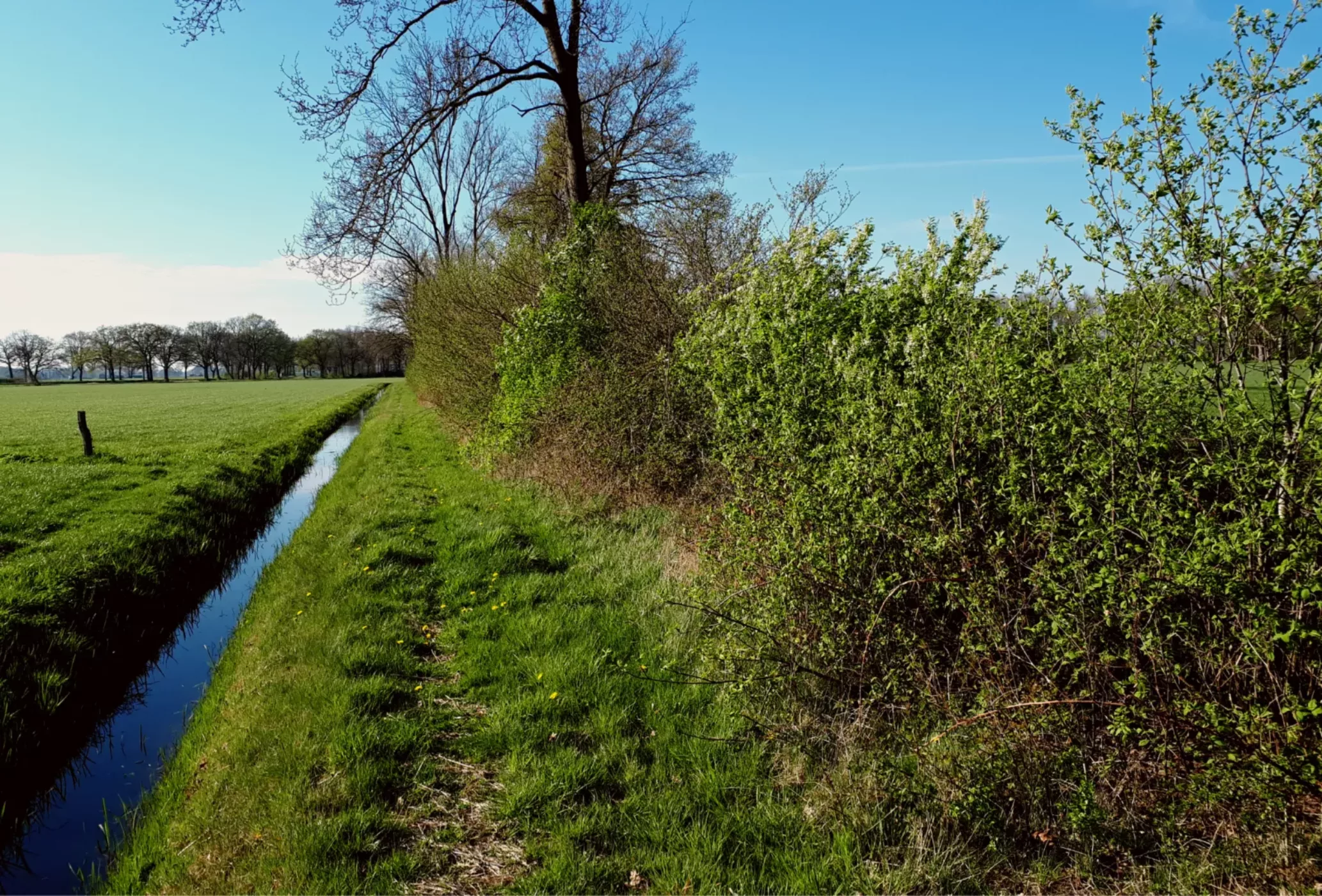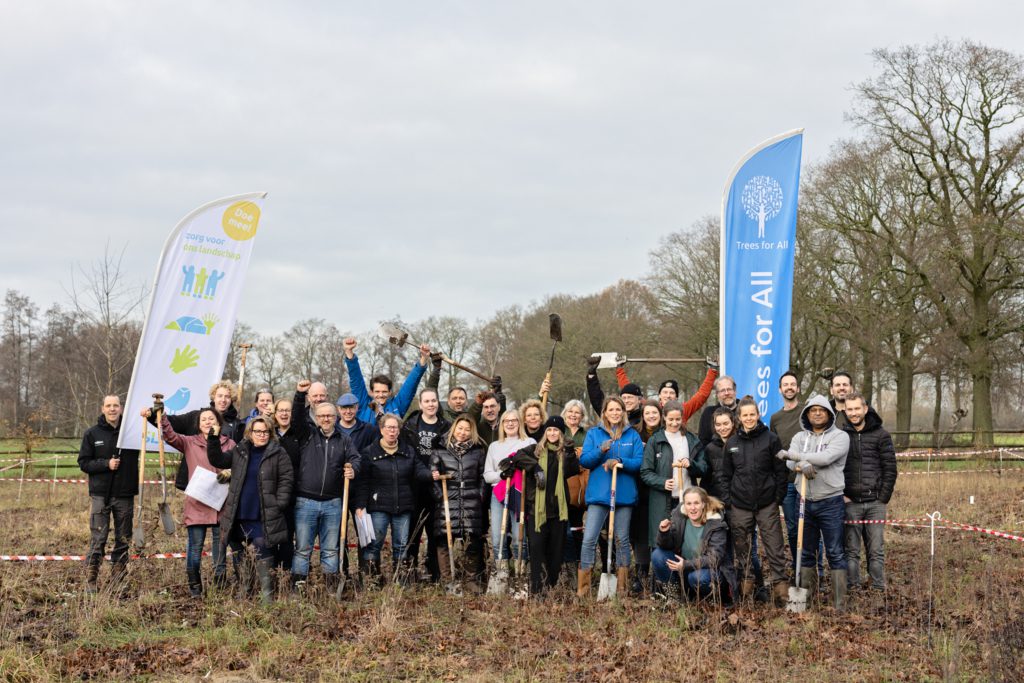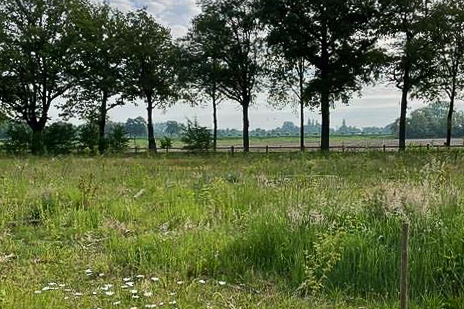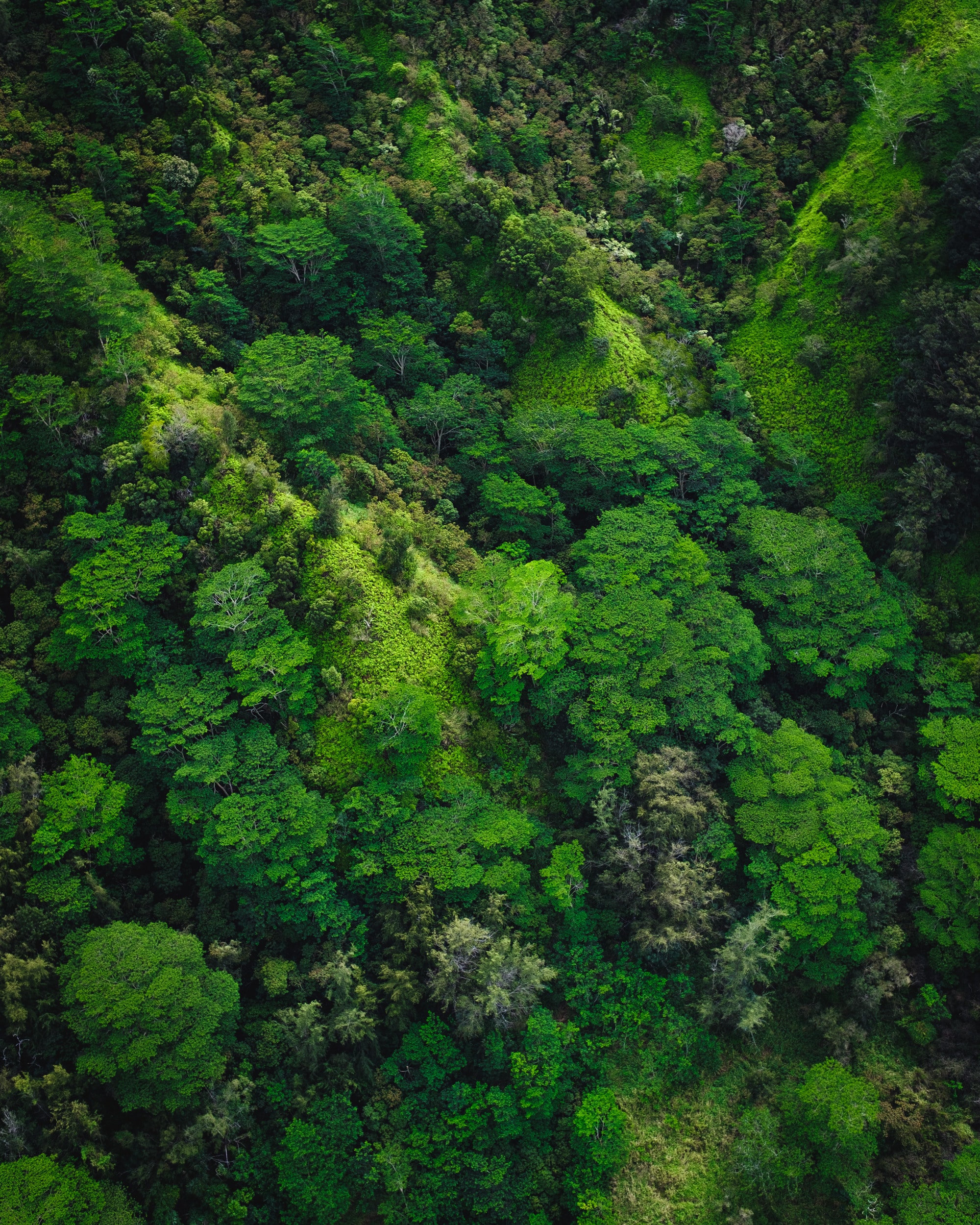More than 108,000 trees and shrubs planted in rural areas of Gelderland: results 2023-2024
17 September 2024

17 September 2024
Trees for All is working on planting landscape elements in the province of Gelderland. Last season, in partnership with Stichting Landschapsbeheer Gelderland and private landowners, we planted more than 50,000 trees and shrubs, spread all over the province.
trees and shrubs
different species
participating landowners
planting season
Trees for All is working on planting landscape elements throughout the Netherlands. Landscape elements are trees and hedgerows that form the structures of our landscapes. Once so characteristic of our rural areas, they’ve unfortunately been disappearing in recent years. This applies to the province of Gelderland too. That’s a great shame, as landscape elements are crucial for a better climate, more biodiversity and healthier living conditions. What’s more, they form an attractive landscape.
So in partnership with Stichting Landschapsbeheer Gelderland and hundreds of enthusiastic private landowners, we’ve planted more than 108,000 new trees and shrubs in the countryside of Gelderland, spread over two planting seasons. We couldn’t have carried out this project without the wonderful support of our donors!
Last planting season, 58 private landowners from all over Gelderland planted trees and shrubs on their land. They created different types of landscape elements, like copses and woodland edges. This means they’re not only creating new green spaces, but also expanding the existing nature.
Landowners could apply for the project through our project partner Landschapsbeheer Gelderland. This foundation assessed all the applications on quality and the next step was to make the planting and management plans. We thus ensure that the right tree ends up in the right place, in keeping with the soil and the surroundings.
The distribution days, when participants received their trees and shrubs, took place in December and January. Many participants did the planting straight away, but the winter was extremely wet. In Gelderland, too, landowners were faced with flooded stretches of land. At places that were submerged, the planting was often postponed.
Fortunately, the late planting survived well, despite the wet spring. And we lost hardly any trees! The trees and shrubs that didn’t survive often fell prey to deer, hares and rabbits.


One of the planting locations was in Geesteren, where landowners were helped by our corporate partners at a successful tree planting day. A total of 1,830 trees and shrubs were planted on a piece of land that used to be a paddock. The good news is that no less than 99% of the planting has taken hold well! Twenty trees have been gnawed, probably by deer, but they are growing again from the base.
After the planting, the landowners in Geesteren spread out a lot of leaves and twigs to improve the soil fertility. This has been very successful, as an abundance of pioneer plants are now coming up, including broad-leaved helleborine, dark mullein, common sorrel, prickly sowthistle, narrow-leaved ragwort, mountain pansy, large-leaved avens, common toadflax, tansy, hairy vetchling, cat’s ear, cypress spurge and mouse-ear hawkweed. Nature is thriving again!
After planting, the landscape elements are also managed by the participants themselves for a minimum of 10 years. In the initial years, for instance, it’s important that the young trees and shrubs are given sufficient water in dry periods and are free of unwanted tall forbs. To help with this, the participants get access to the knowledge bank of Stichting Landschapsbeheer Gelderland. And Trees for All remains involved in monitoring the planted trees.
Below are some examples of locations in Gelderland where landscape elements were planted last planting season.
When planting new forests, it’s normal that not all the trees survive. So we make agreements with our project partners beforehand about the percentage of loss we allow within a project. Usually, this percentage is between 5 and 15%. If the loss is higher, due to unforeseen circumstances, then new trees are planted in the following planting season. This is also known as refill. So together, we make sure the forest gets off to a good start!
In Gelderland, many different species of tree and shrub have been planted. Examples include oak, beech, alder, hazel, hawthorn, field maple, birch, spindle and rowan. These are native species that occur naturally in the area and make a big contribution to its biodiversity. The variety of species attracts all sorts of plants and wildlife. Breeding birds, amphibians, reptiles, butterflies, insects and small mammals find their food here, as well as shelter or a place to breed.
Moreover, the landscape elements help to link up different areas. Animals can move more easily from one area to another through the trees and bushes. So thanks to this project, their habitat becomes bigger.
Landscape elements also contribute to a better climate, as the wooded banks, groves, thickets and hedgerows sequester carbon. They also capture particulates and nitrogen. Through this project, we’re therefore contributing to major goals from the Climate Agreement to reduce carbon and nitrogen levels.
The landscape elements also provide oxygen, clean air and patches of shade on hot days. And they contribute to environmentally friendly agriculture, as they attract insects for natural pest control. Think of wasps eating the oak processionary caterpillar.
Finally, the trees and shrubs give the landscape a unique character and identity where residents feel at home. The characteristic pollard willows and alder sedges, for example! This creates a pleasant and healthy (living) environment for people and animals in the countryside.
If you’d like to read more about the benefits of landscape elements and the value they add to our surroundings, take a look at our website.
Landscape elements have numerous functions and benefits. They contribute to a better climate, more biodiversity, more sustainable agriculture and a healthy living environment. They also connect natural areas.

Without the support of our donors, this project would not have been possible. Together, we have made the world a little greener again. See you next planting season!